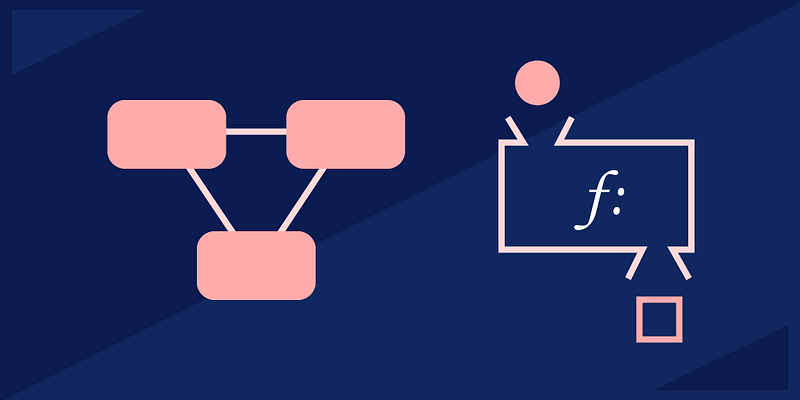The Rise of Functional Programming Languages
Functional programming languages have been steadily gaining popularity in recent years.

Functional programming languages have been steadily gaining popularity in recent years.
These languages prioritize using functions and immutable data structures, leading to more predictable, testable, and maintainable code.
In this article, we'll explore the rise of functional programming languages, examine some of the most popular ones, and delve into how they work at a low level.
The Rise of Functional Programming Languages
Functional programming has its roots in lambda calculus, a mathematical notation system developed by Alonzo Church in the 1930s.
The lambda calculus provided a foundation for understanding computation and led to the creation of Lisp, the first functional programming language, by John McCarthy in 1958.
Over the years, functional programming languages have evolved and gained popularity for various reasons:
- Improved maintainability: Functional code is often more readable and easier to maintain, as it discourages mutable states and side effects.
- Concurrency: As computer architectures increasingly rely on parallel and distributed processing, functional programming languages offer a more natural way to express concurrent and parallel code.
- Modularity: Functional programming languages promote using smaller, reusable, easily combined functions, leading to more modular code.
- Academic research: Many functional programming languages have a solid connection to academia, where they are often used for research purposes and as teaching tools.
The Functional Paradigm
Functional programming is based on treating computation as the evaluation of mathematical functions.
This paradigm contrasts the common imperative programming, which emphasizes manipulating the program state.
Functional programming languages promote immutability, referential transparency, and higher-order functions, which enable them to minimize side effects and improve code readability.
Functional programming principles and mechanisms
Lambda Calculus: The Foundation
Lambda calculus is a formal system in mathematical logic that forms the foundation of functional programming languages, dealing with anonymous functions, or lambda abstractions, which can be applied to arguments, composed, and manipulated in various ways.
Function Composition and Evaluation
At the core of functional programming is function composition, which allows developers to create complex programs by chaining smaller, more straightforward functions.
In functional languages, functions are first-class citizens, meaning they can be passed as arguments, returned as values, and stored in data structures.
The evaluation process typically follows the substitution model, where function applications are evaluated by substituting the actual parameters for the formal ones and then reducing the resulting expressions.
Immutability and Persistent Data Structures
Functional programming languages promote immutability, which means that once a value is assigned, it cannot be changed. This characteristic helps reduce side effects and bugs, simplifies parallelism, and enhances code readability.
To support immutability, functional languages often rely on persistent data structures, which efficiently maintain previous versions of data when changes are made. Examples of such data structures include persistent arrays, persistent trees, and persistent hash maps.
Tail Call Optimization
Recursion is often preferred over loops as a control structure in functional programming languages. However, recursion can lead to stack overflow issues in some cases.
To mitigate this, functional languages employ tail call optimization (TCO).
This technique eliminates the need for additional stack frames when a function call is the last action of another function.
TCO allows for the efficient execution of recursive functions without consuming excessive stack memory.
Lazy Evaluation
Lazy evaluation is a strategy some functional programming languages use to defer an expression's evaluation until its value is needed.
This approach can improve performance by avoiding unnecessary calculations and can enable the definition of infinite data structures.
Languages like Haskell are famous for their lazy evaluation, which allows a wide range of optimizations and expressive programming patterns.
The Most Popular Functional Programming Languages
Numerous functional programming languages are available today, each with its unique set of features and applications. Some of the most popular ones include:
- Haskell: Developed in the late 1980s, Haskell is a purely functional, statically typed language with a strong emphasis on mathematical concepts, making it popular among researchers and academics.
- Scala: Scala, created by Martin Odersky in 2003, is a hybrid functional-object-oriented language that runs on the Java Virtual Machine (JVM). It has gained popularity due to its compatibility with existing Java libraries and its ability to integrate functional and object-oriented programming seamlessly.
- Clojure: Invented by Rich Hickey in 2007, Clojure is a Lisp dialect that runs on the JVM. It is designed for concurrency and emphasizes the use of immutable data structures.
- Elixir: José Valim created Elixir in 2011 as a functional, concurrent language that runs on the Erlang Virtual Machine (BEAM). It is well-suited for building distributed, fault-tolerant systems.
- Elm: Developed by Evan Czaplicki in 2012, Elm is a statically typed, purely functional language for front-end web development. Elm emphasizes simplicity, maintainability, and performance.
Functional programming languages provide a robust and elegant way to write code, but their magic is rooted in a combination of well-understood principles and low-level mechanisms.
These languages build upon the foundations of lambda calculus, leveraging function composition, immutability, tail call optimization, and lazy evaluation to create expressive and maintainable programs.
Did you like the article? Leave a comment!
Follow me on Medium, LinkedIn, and Twitter.
All the best,
Luis Soares
CTO | Head of Engineering | Cyber Security | Blockchain Engineer | NFT | Web3 | DeFi | Data Scientist
#functional #programming #paradigm #immutability #concurrency #readability #maintainability #datastructure #programminglanguages #software #architecture #application #softwaredevelopment #softwareengineering



